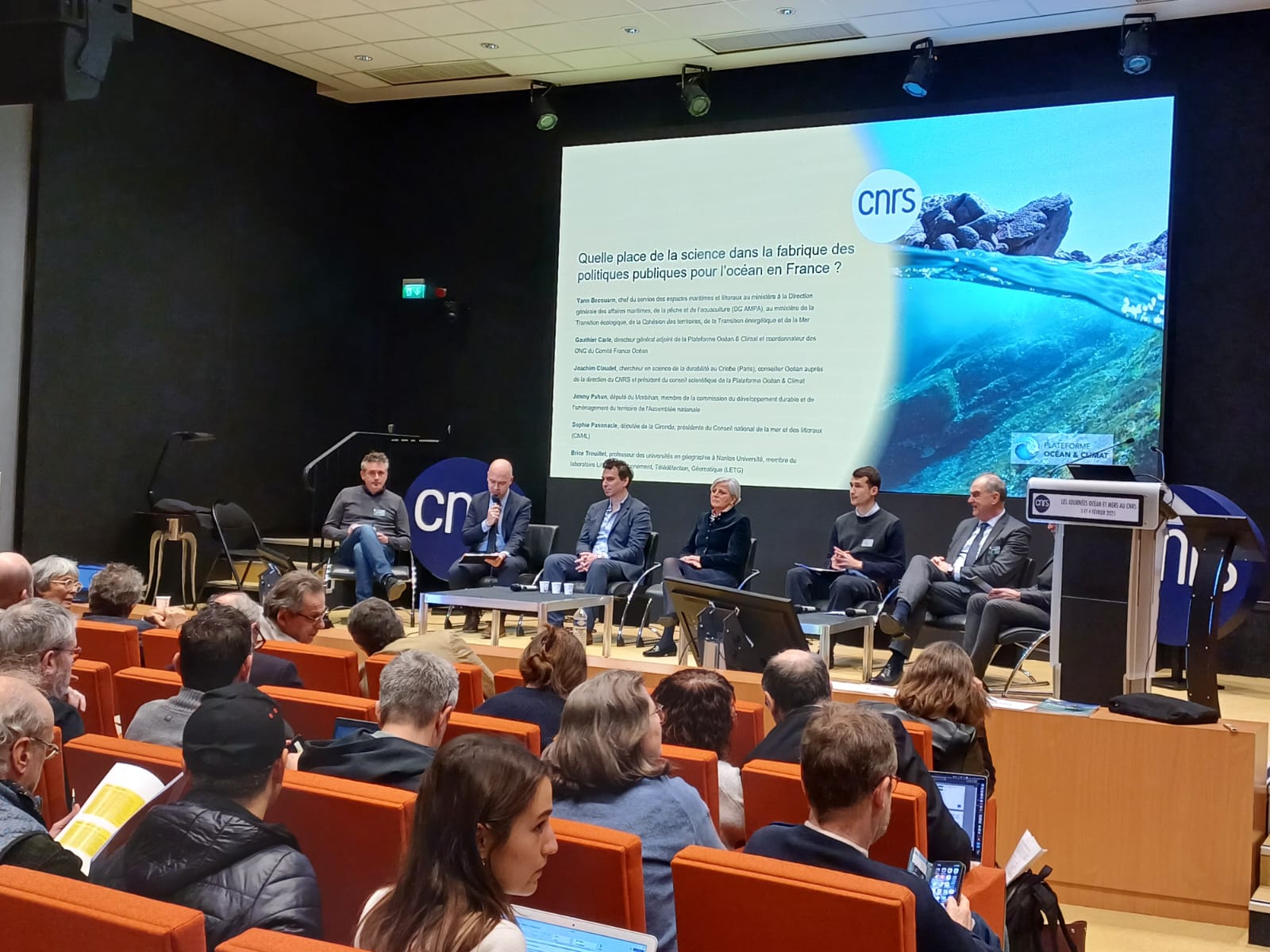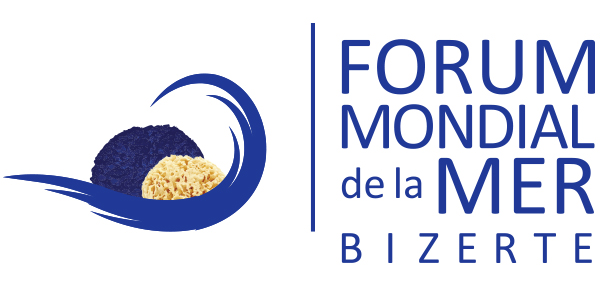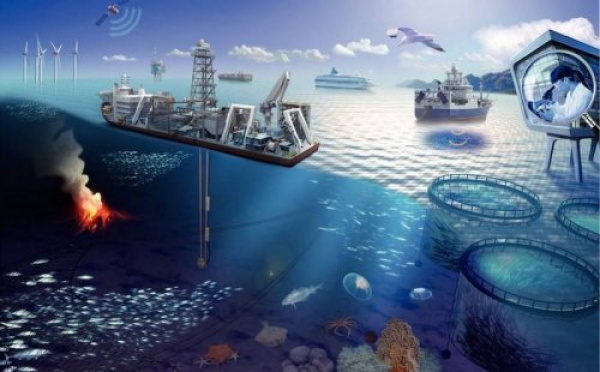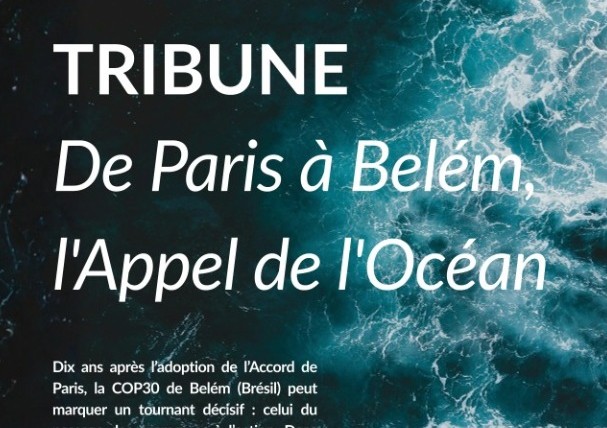
Scientists, policymakers, and artists have reshaped the contours of research to inform political and societal choices during a major conference organized by the GDR OMER (Ocean and Seas Research Group) at the CNRS headquarters in Paris on February 3rd and 4th. This bold ambition, just months before the United Nations Ocean Conference, could change the game for ocean protection.
« The oceans are suffering, » warned UNESCO in the summer of 2024. In the face of this complex crisis, science must break down its silos and reconnect its knowledge. This is exactly what GDR OMER (Ocean and Seas) is doing. Created in 2021, this CNRS research group has made interdisciplinarity its battle cry: all of its working groups and the theses they fund push the boundaries of traditional fundamental science. As a true incubator of ideas, OMER positions itself as a precursor to other ocean-related projects on both national and international scales.
A few months before the 3rd United Nations Ocean Conference (UNOC3) and the One Ocean Science Congress (OOSC) to be held in Nice in early June, GDR OMER took stock during the CNRS Ocean and Sea Days, discussing issues such as the motivations behind research and the role of young researchers in marine sciences. For the first time, it opened up to new external stakeholders. Over the course of two days, more than 200 people—including researchers, policymakers, media professionals, and artists—gathered at the CNRS headquarters to explore crucial questions: how can science better address the challenges facing the ocean? And how can scientific knowledge be consolidated and advanced to nourish informed political, economic, and social decisions?
Interdisciplinarity: An Essential Bridge Between Knowledge and Practice
With over 1,300 contributors, GDR OMER knows how to unite research efforts. Its working groups address a wide range of topics, including coastal areas, the digital ocean, and oceanic sounds. « Centralizing ocean research seems obvious, but bringing together all specialties around this common object is a real challenge, » says Fabrizio D’Ortenzio, director of GDR OMER. « That’s why we launched these exchange days. »
Each year, these meetings allow participants to track the progress made, exchange insights on methodological and thematic advances, and address emerging issues such as the management of new technologies (AI, digital twins, etc.) and the questions they raise (economic impact, environmental concerns, open science, etc.). Challenges related to scientific interdisciplinarity—such as training new researchers, fostering dialogue between disciplines, and publishing interdisciplinary results—were raised during the roundtable discussions and exhibitions. But this year, the novelty of the program was its expansion into other spheres of society.
The Urgency of Open Science Toward Other Communities
After three years of research consolidation, GDR OMER emphasized the urgent need for science to be more open to public decision-makers. With UNOC3 on the horizon, Olivier Poivre d’Arvor responded to GDR OMER’s invitation: « It is useful to take stock. In Nice, we will be at a crucial moment, with many leaders gathered who will be able to listen and understand. This context makes this conference both exciting and essential, » said the French President’s special envoy for the United Nations Ocean Conference at the opening of the « Acting for the Ocean – Connecting Ocean Science to Public Policy » session.
This echoes a political world in need of robust scientific knowledge to make decisions. « Our mission is to unite all the economic, environmental, and social components of maritime policy. To do so, all our public policies and decisions are based on science. However, public action has never been more contested. To move forward, it is clear that we need to deepen interdisciplinary approaches like those of GDR OMER, » said Éric Banel, Director General of Maritime Affairs, Fisheries, and Aquaculture (DGAMPA) and a guest at the conference.
The complexity of issues like the development of marine renewable energies requires, for instance, in-depth knowledge (environmental and biodiversity impacts, effects on water masses, underwater noise), but it also demands significant work in persuasion and explanation, as demonstrated by the public debate held by the state on the seas in 2024. The same applies to fisheries management or the preservation of coastal wetlands. All these issues require better collaboration between science and politics.
However, as Éric Banel points out, the connection between science and policy remains fraught with difficulties: « There is work to be done to ensure that the scientific proposal is understandable to the public decision-maker, and that, conversely, the decision is acceptable to the scientist. »
Thanks to massive investments in research programs, ocean science has greatly advanced in recent years and now meets the main expectations of decision-makers. Data is available in abundance, and platforms for exchanging ideas between science and policy have multiplied. Organizations like POC (Ocean & Climate Platform) are key intermediaries between science and decision-makers. « The real challenge is to organize a fluid dialogue between all actors—scientists, industries, associations, citizens, etc.—without which public decision-making is difficult, » adds Éric Banel.
Towards an International Ocean Governance
This exchange issue is reflected on a global scale. The ocean, devoid of borders, is currently at the heart of complex international dynamics. However, as Éric Banel points out, « While ocean governance is certainly international, it is far from being global. » Indeed, the ocean is at the center of diverse and often conflicting interests: environment, maritime transport, fishing… This fragmentation is reflected in the multitude of organizations, each with partial goals (International Maritime Organization, International Council for the Exploration of the Sea, etc.).
These debates take place ahead of the United Nations Ocean Conference, which has significantly influenced the day’s discussions due to its stakes. This event aims to provide a framework that brings together these divergent voices around a common governance system and clear objectives for the sustainable management of oceans. And this global vision needs scientific knowledge to emerge. In turn, scientists are well aware of the crucial role they play. « We are keen to express our ideas and visions that go beyond the framework of GDR. That’s why three working groups from OMER on ocean governance, deep-sea studies, and ocean connectivity will have sessions at the One Ocean Science Congress, organized by CNRS and Ifremer (which precedes the UNOC), and which will highlight the priority challenges identified by the United Nations, » explains Fabrizio D’Ortenzio.
Raising Awareness Among All Audiences
The issue of scientific communication was also a major concern during these days. « Scientists urgently need to communicate better, faster, and in a way that resonates with a society that doesn’t always listen to them, » says Laurent Chauvaud, researcher and co-leader of the SIAM (Science and Art of the Sea) working group at OMER and facilitator during the « Sharing About the Ocean: The Challenge of Information and Imagination » session.
To this end, the academic world has long multiplied its dissemination platforms, from collaborations with the media to organizing educational exhibitions in scientific museums. The plurality of contemporary media and popular modes of information, such as videos (YouTube, social media) and podcasts, invite scientists to go beyond traditional dissemination methods and explore new ways of doing so. « In recent years, I have sensed a new generation of scientists who want to engage in this sharing, but in a thoughtful manner, guided by those who understand communication codes. We know we must take part in ocean debates, but not just any way, to avoid damaging the subject despite good intentions, » notes Fabrizio D’Ortenzio.
Finally, art could play a bigger role in this transmission. This is what the SIAM group is exploring with its work on the interaction between science and art to provide a more inclusive and creative form of ocean communication. Art can notably evoke invisible realities, like the deep ocean, and enrich the dialogue around these crucial issues. « Connecting art and science is not new. In the Age of Enlightenment, there was no distinction between the two; they were mixed in a common culture. Just as OMER breaks down disciplinary barriers, there is a real interest in reconnecting art and science to create new insights to address oceanic challenges, » concludes Laurent Chauvaud.
Source: crns



